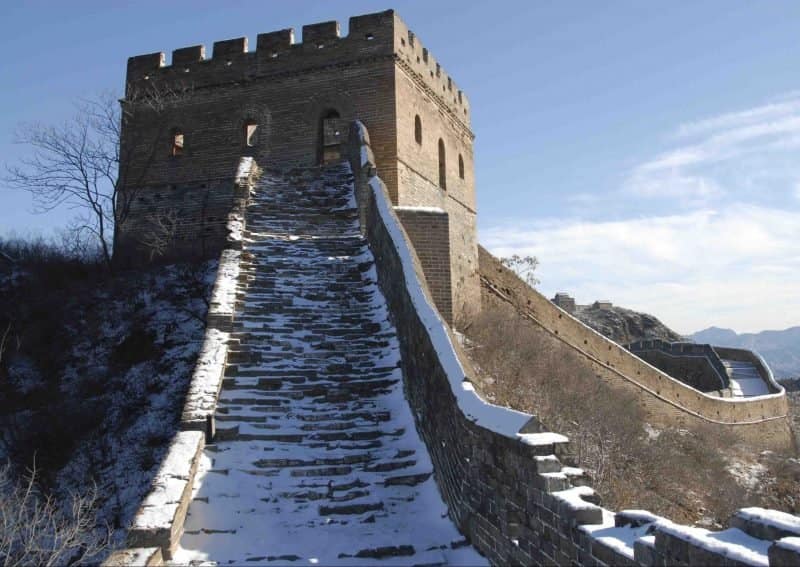Day One
At the end of our flight, the oasis town of Dunhuang appears unexpectedly in the midst of a seemingly infinite sandy desert. After landing here in the late afternoon, we will check into the Sun Villa Hotel. Tonight, dinner will be served al fresco in the hotel's spacious gardens (weather permitting). (Silk Road Hotel – Deluxe Suite) (D)
Day Two
The day starts at one of the world's most impressive cultural heritage sites, » Read more »
» Read more »When you see this massive structure snaking its way across precipitous, rocky ridges, sometimes even lain across iron beams to bridge windy chasms, you will be amazed by the sheer scale of the undertaking. From the Bohai Sea in the East to Dunhuang’s desert plains in the West, the Great Wall stretches its knotted spine. Looking at it, perhaps you will wonder why.
From earliest times civilizations such as those of the Greeks and Hebrews enclosed their cities within a perimeter wall. » Read more »
» Read more »Through China's long history three geographic areas have been vital to her overall defense. The first is the Tarim Basin, marked on many Western maps as the western half of the Gobi Desert. The second is the marshy grasslands of the Ordos, located around the great loop of the Yellow River, now in Inner Mongolia. The third area is the Orkhon river valley northwest of the Ordos in Outer Mongolia. Whoever controlled any of these three areas had a strong base from which to threaten China. » Read more »
» Read more »By Brook Wilkinson
Scoring a cheap flight and a discounted hotel room is relatively easy these days. But a simple Web search isn't going to gain you entrée to a Masai village in Kenya, where you'll sleep in a traditional cowhide bed. Nor can it help you grab a spot atop one of the most popular floats during Brazil's Carnaval, so you can shake your booty in front of thousands. Or secure you a ticket to St. » Read more »
» Read more »By Guy Rubin
Centuries ago, in a cliff-face in the midst of China's vast Taklamakan desert, artists hollowed, sculpted and painted 492 caves, creating over 450,000 square feet of spectacular murals, or more than thirty times the mural area of the Sistine Chapel. But whereas the Sistine Chapel was painted over a few years, the works at the Mogao Caves began in the fourth century and were completed over the next millennium. » Read more »
» Read more »



